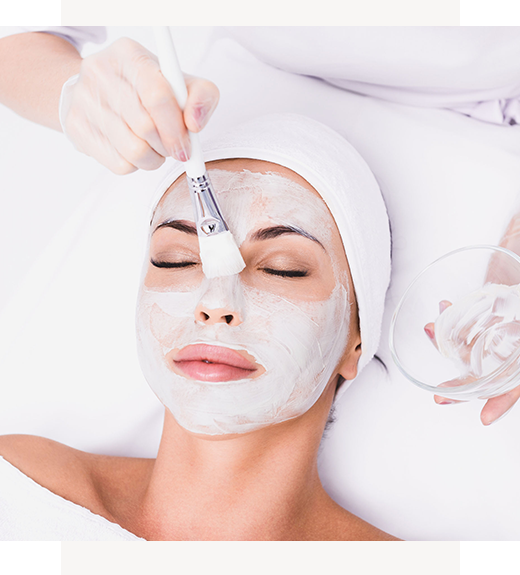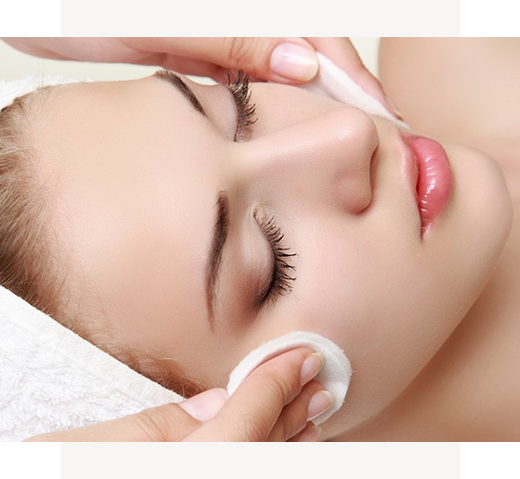Chemical Peel
What is Chemical Peel?
A chemical peel is a solution consisting of exfoliating agents. When applied on your skin, the rough upper layer of the skin will be gently removed.

How does Chemical Peel work?
As the chemical peel works on your skin, the upper layer of your skin is removed, giving away to a new layer of skin right underneath. This promotes the rejuvenation of your new skin cells, tightening and smoothing your skin in the process.
Aside from firmer and smoother skin, you can also expect to clear off some blemishes such as acne or acne scars, pigmentation, melasma and age spots. Your skin tightening would also mean that you’re removing the fine lines forming wrinkles on your skin for a radiant and youthful complexion.
There are various types of chemical peels to cater to different skin types, strength levels and problems. Superficial and medium peels cater to skin surface problems, such as your skin texture, pigmentation and wrinkles. Deep peels tackle more severe conditions, including acne and acne scars.
Benefits of Chemical Peel
- Effective acne treatment
- Minimizes pores
- Erases fine lines and wrinkles
- Fades discoloration
- Lifts and firms skin
- Soothes scarring
- Balances texture
- Smoothes skin
- Non-invasive treatment
- No downtime
Frequently Asked Question
There is little to no downtime for chemical peels, which is outlined in the section below.
Your skin will be sensitive following the treatment. If you used deep peels in your treatment, you may experience blistering and swelling, after which the top damaged layer will peel off over two weeks.
Each chemical peel session takes about 30-60 minutes. Superficial peels can be done once a month while deep peels are recommended about once every 6 months, but the exact interval and frequency depends on the type of peel you go for.
Chemical Peel is also used for…
- Acne & Acne Scar
- Skin Rejuvenation
- Melasma / Pigmentation / Age Spot / Whitening


